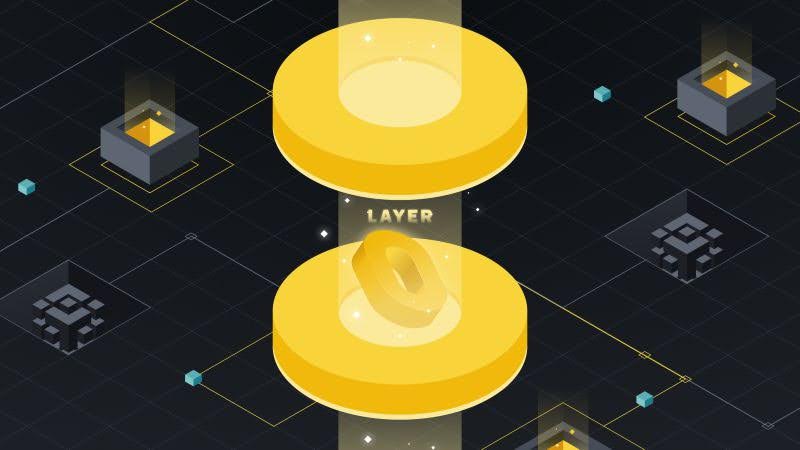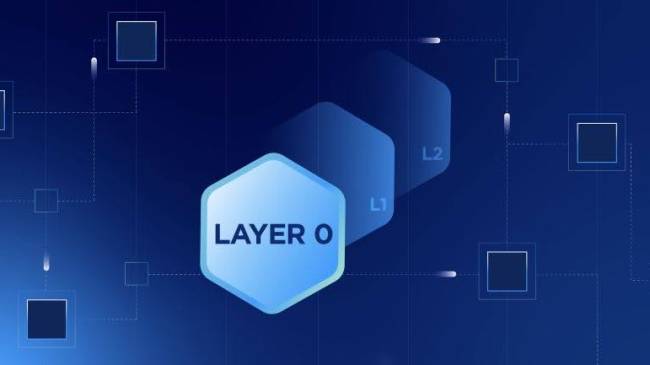Discover the pivotal role of Layer 0 network protocols in facilitating blockchain interoperability. Learn how U2U Network harnesses this foundational layer to forge a more interconnected and scalable blockchain ecosystem.
Table of Contents
What are Layer 0 Network Protocols?
Layer 0 network protocols serve as the foundational layer that enables seamless communication, data transfer, and asset exchange across different blockchains. While Layer 1 blockchains like Bitcoin and Ethereum handle transaction execution, Layer 0 protocols focus on connecting these decentralized networks, fostering a more integrated and scalable ecosystem.

Key Functions of Layer 0 Network Protocols
Cross-Chain Communication: Establish secure channels for exchanging messages and data between disparate blockchains.
- Asset Transfer: Facilitate the transfer of digital assets, such as tokens and cryptocurrencies, across blockchain networks, enhancing liquidity and enabling innovative use cases.
- Shared Security: Provide a shared security model that enhances the resilience and overall security of interconnected blockchains.
- Data Availability: Ensure accessibility of transaction data necessary for validation and execution across interconnected blockchains.
- Consensus Coordination: Coordinate consensus mechanisms among multiple blockchains to maintain network integrity and consistency.
Why Layer 0 is Crucial for Blockchain
Layer 0 protocols are indispensable in the evolving blockchain landscape, addressing the increasing need for interoperability among diverse blockchain networks. By bridging isolated blockchains, Layer 0 protocols:
- Enhance Scalability: Distribute transaction processing across multiple chains, alleviating scalability challenges faced by individual blockchains.
- Promote Interoperability: Enable interconnected decentralized applications (dApps) that leverage diverse blockchain strengths, fostering a more resilient ecosystem.
- Strengthen Security: Implement shared security measures that bolster the overall security posture of interconnected blockchains.
- Enable New Applications: Unlock innovative cross-chain applications like decentralized exchanges and cross-chain lending, expanding the scope of blockchain utility.
Types of Layer 0 Network Protocols
Layer 0 network protocols encompass a diverse array of technologies, each contributing uniquely to achieving seamless interoperability between blockchain networks. Here’s an exploration of some prominent types:
Relay Chains: The Backbone of Multichain Networks
Relay chains, exemplified by Polkadot's Relay Chain, serve as the central nervous system of multichain networks. They act as the primary conduit for connecting and securing multiple parachains—autonomous blockchains operating in parallel. By providing shared security, consensus mechanisms, and facilitating cross-chain communication, relay chains ensure the cohesion and reliability of the entire network.
Inter-Blockchain Communication (IBC) Protocols: Standardizing Blockchain Interaction
IBC protocols, championed by the Cosmos ecosystem, establish a standardized framework for communication and asset transfer between independent blockchains. Functioning as a universal language for blockchain interoperability, IBC protocols enable seamless exchange of information across different networks. This capability is pivotal in fostering a connected blockchain ecosystem where diverse platforms can leverage complementary strengths and functionalities.

Substrates: Modular Framework for Tailored Blockchain Solutions
Substrate, developed by Parity Technologies, offers a modular blockchain framework that empowers developers to create customizable Layer 0 protocols. With its flexible and extensible architecture, Substrate supports the development of bespoke blockchains—from building new networks to adapting existing templates. Its versatility has made Substrate a preferred choice for constructing parachains on platforms like Polkadot, enabling tailored solutions to specific blockchain requirements.
Emerging Layer 0 Innovations:
In addition to relay chains, IBC protocols, and Substrate, ongoing innovations in Layer 0 continue to expand the horizons of blockchain interoperability. For instance, Avalanche's subnet architecture facilitates the creation of scalable and adaptable subnetworks within its ecosystem. Similarly, U2U Network is pioneering proprietary Layer 0 protocols aimed at enhancing scalability, security, and interoperability on its platform.
Benefits of Layer 0 Network Protocols
Layer 0 network protocols are the cornerstone of modern blockchain infrastructure, facilitating seamless communication and interaction across diverse blockchain networks. They play a pivotal role in enhancing the efficiency, security, and flexibility of decentralized ecosystems.
Interoperability: Bridging Blockchain Networks
Layer 0 protocols enable interoperability by establishing standardized communication channels between different blockchains. This capability allows for seamless data exchange and interaction, fostering the development of cross-chain applications and services. Developers can leverage the strengths of multiple blockchains, combining functionalities such as security and scalability to create innovative solutions.
Scalability: Breaking Through Transaction Bottlenecks
Scalability is a persistent challenge for blockchain networks aiming to handle high transaction volumes. Layer 0 protocols address this issue by enabling parallel transaction processing across multiple chains. This distributed approach significantly boosts throughput and reduces congestion, ensuring that blockchain networks can scale effectively to meet growing demands.

Security: Enhancing Network Resilience
Layer 0 networks, like Polkadot's relay chain, offer a shared security model that enhances the resilience of interconnected blockchains. By pooling security resources, these protocols provide robust protection against attacks and ensure the integrity of cross-chain transactions. This collaborative security approach is more efficient and cost-effective than individual blockchains securing themselves.
Flexibility: Tailored Solutions for Diverse Needs
Layer 0 protocols provide a flexible framework that can be tailored to meet specific requirements of different blockchain ecosystems. For instance, Substrate by Parity Technologies offers a modular architecture that allows developers to customize blockchain solutions according to use case demands. This adaptability supports the creation of specialized applications, from high-performance financial systems to privacy-focused decentralized networks.
Relationship between U2U Network and Layer 0
U2U Network is strategically positioned at the forefront of blockchain interoperability, recognizing the pivotal role that Layer 0 network protocols play in creating a more connected and scalable future. By actively exploring and integrating Layer 0 solutions, U2U Network is empowering its platform with enhanced capabilities and unlocking new possibilities for users and partners.

U2U Network is committed to building a robust and adaptable infrastructure that seamlessly integrates with a wide range of blockchain networks. Here are several key initiatives in the Layer 0 space:
- Integrating with Existing Layer 0 Networks: U2U Network is forging partnerships and integrations with established Layer 0 networks such as Cosmos and Polkadot. These collaborations enable U2U to leverage existing infrastructure, security features, and interoperability capabilities, extending the reach of its ecosystem and facilitating cross-chain transactions.
- Developing Custom Bridges: U2U Network is developing custom bridges to connect its blockchain with major networks like Ethereum and Binance Smart Chain. These bridges facilitate seamless asset and data transfers between different blockchains, enhancing liquidity and fostering new opportunities for cross-chain collaboration.
- Exploring Substrate Framework: U2U Network is exploring the use of Substrate, a modular blockchain framework by Parity Technologies, to develop tailored Layer 0 solutions. This includes potential deployments of specialized parachains or implementation of custom consensus mechanisms to optimize performance and scalability for specific platform needs.
In conclusion, Layer 0 network protocols represent more than just a technical advancement; they signify a fundamental shift in our approach to the blockchain landscape. U2U Network stands at the forefront of this transformative wave, actively embracing and driving the development of Layer 0 solutions. By doing so, U2U not only enhances its platform's interoperability and scalability but also nurtures a more connected and collaborative blockchain ecosystem.
This commitment to innovation and interoperability positions U2U Network as a pivotal player in shaping the future of blockchain technology. Emphasizing seamless cross-chain communication and collaboration, U2U Network is paving the way for a new era of decentralized applications and services. As U2U continues to push the boundaries of what's possible with Layer 0 protocols, it sets the stage for unprecedented opportunities in blockchain, unlocking new frontiers in efficiency, security, and user experience.





.png)
